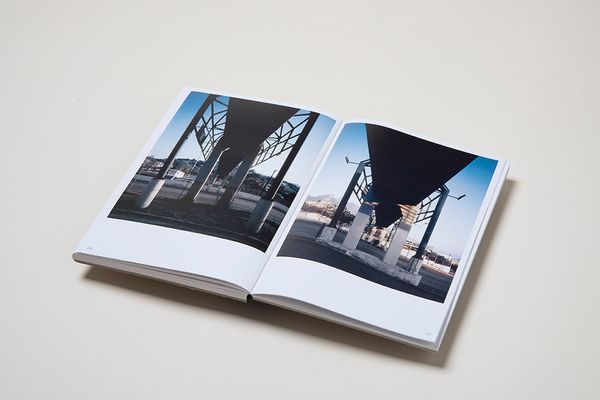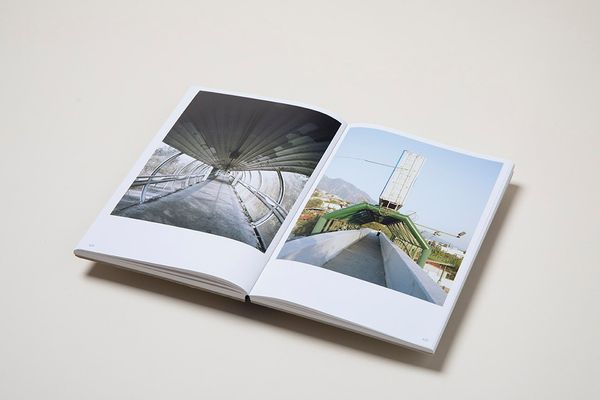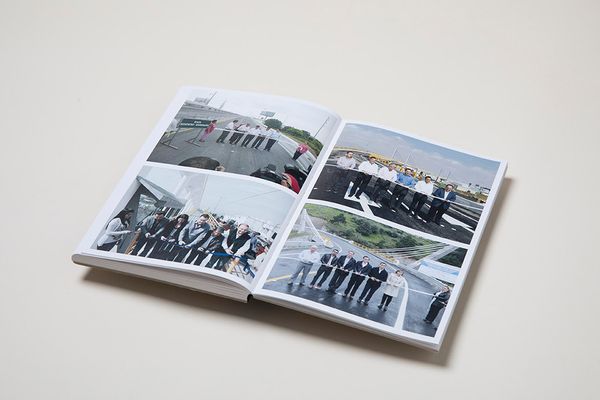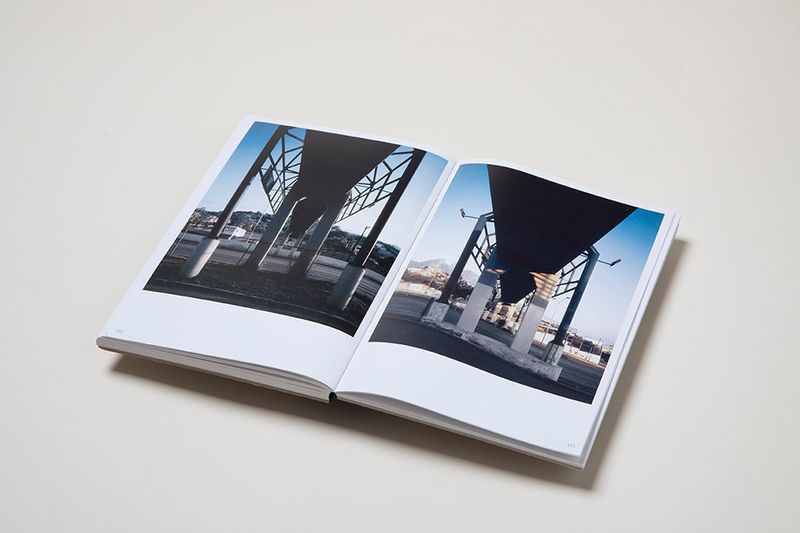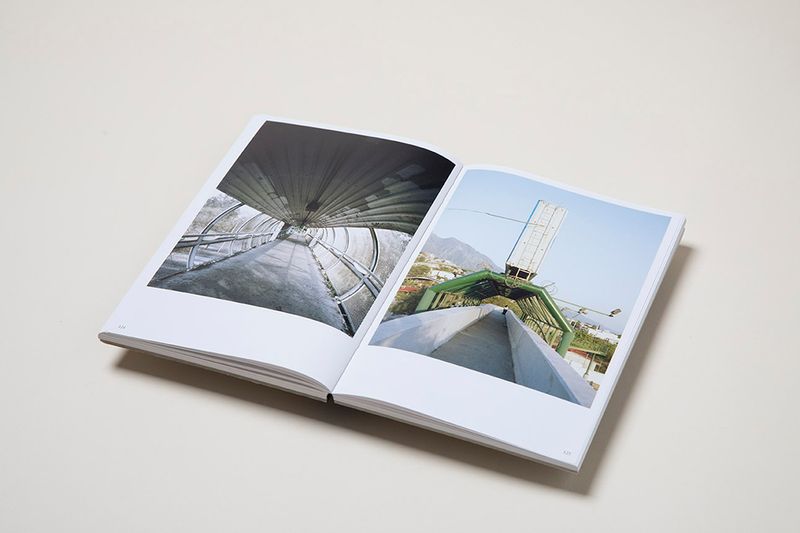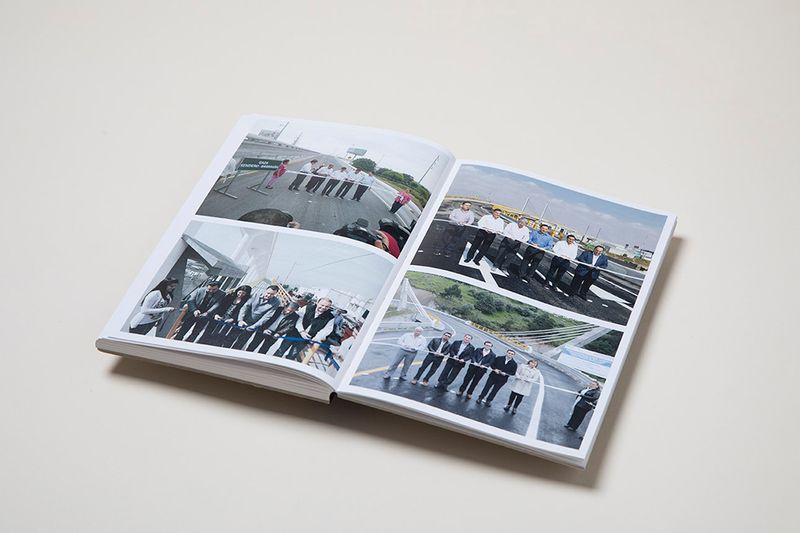The Aesthetics of Corruption
-
Published23 Nov 2017
-
Author
Alejandro Cartagena’s latest publication, A Guide of Infrastructure and Corruption investigates the ideas of progress, territory, and politics in Monterrey, Mexico.
Alejandro Cartagena’s latest publication, A Guide of Infrastructure and Corruption investigates the ideas of progress, territory, and politics in Monterrey, Mexico.
Alejandro Cartagena is a photographer based in Monterrey (Mexico) who has been prolifically using the photobook as his main vehicle to drive visual ideas. His interest in the interconnections between land, territory, and politics lead him to create visual investigations that highlight environmental topics based on local stories that talk about wider issues that we, passengers in capitalist trucks, can relate to.
His latest title, A Guide to Infrastructure and Corruption, published by The Velvet Cell, is a particular type of guide where the author confronts the urban landscape of Monterrey with the socio-political consequences of its transformation and development.
The book, divided into four chapters (The Road You Take, The Dispossessed, Where to Cross, Structural Corruption and the Epilogue) conformed to a structured narrative - a perfect equilibrium between Cartagena's images and the sharp words of Ximena Peredo, activist and journalist, who collaborates in this book. The combination of both create the perfect pace and tension that we, as readers, demand. In the first three chapters, Cartagena’s language incorporates a wealth of infrastructures that are currently in progress in Monterrey. Most of the images are presented as diptychs with panoramic views: the ultimate expression of authoritarianism. This view is sometimes disjointed to underline the fragility of the city or the vulnerability of the species that inhabit it.
Starting on an empty road, we see the workers getting prepared to block the traffic in order to start the construction works. Asphalt and concrete are decorated with corporative signs along the way; these new roads of progress will create new physical but also psychological barriers for those who attempt to walk through. "There is no place for nature except for its representation" Paredo writes, and indeed its hard to believe these soulless places are developed for the benefit of mankind.
New constructions are anchored to the land, they came to stay without objection. People and nature seem lost and confused while witnessing an aggressive occupation that none can interrupt. Yellow lines, white lines, solid lines, broken lines, electricity lines, traffic lights, staircases, overpasses… those who decide to cross this new territory without a car, need to do it through a series of fenced pedestrian passages elevated from the ground, designed to avoid any attempt of suicide that might challenge these aesthetics of corruption.
But who is all this new infrastructure for? Who is responsible for these decisions? In the chapter Structural Corruption, Cartagena turns the camera back to those places where decisions are taken, historical buildings currently occupied by candid decision-makers from the local and national governments who have the duty of building a city for them, for their power. The Epilogue, composed of archival, corporative and other images sourced from the media, guides us to the darkest consequence of this urban war; the one and only that can challenge this aesthetic corruption.
--------------
A Guide to Infrastructure and Corruption by Alejandro Cartagena
Limited Edition Hardcover of 450 Copies // Special Slipcase Edition (w/ 2 Prints) of 50 Copies
Book concept by Alejandro Cartagena // Design by Éanna de Fréine, Fernando Gallegos and Alejandro Cartagena
Edited by Fernando Gallegos and Alejandro Cartagena // Texts by Ximena Peredo
Prepress by La Troupe // Printed in Taiwan // Published by The Velvet Cell
192 pp / 140 x 210 mm // Hardcover, Tape-Bound // Four Colour Offset // $44
--------------
Alejandro Cartagena lives and works in Monterrey, Mexico. His projects employ landscape and portraiture as a means to examine social, urban and environmental issues.
Alejandro Acin is director of IC-Visual Lab, an organisation based in Bristol (UK) that aims to promote and produce contemporary photography through a series of events and commissioned projects. IC-Visual Lab organises Photobook Bristol, an international festival for photobooks. He also works as designer and editor at ICVL Studio. Follow him on Twitter and Instagram.
